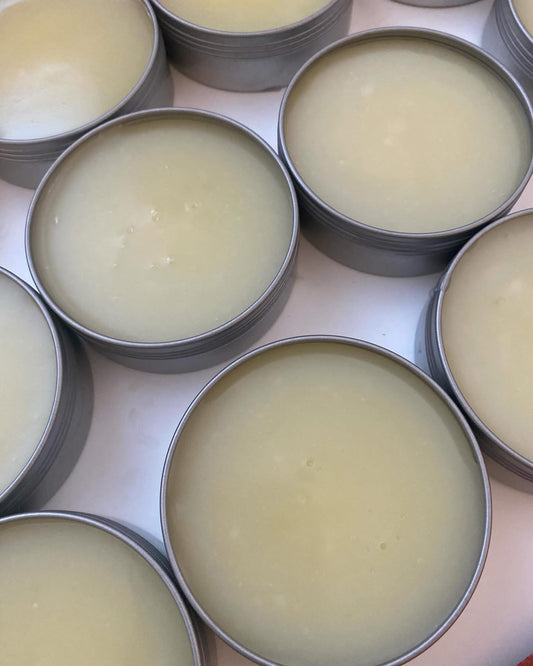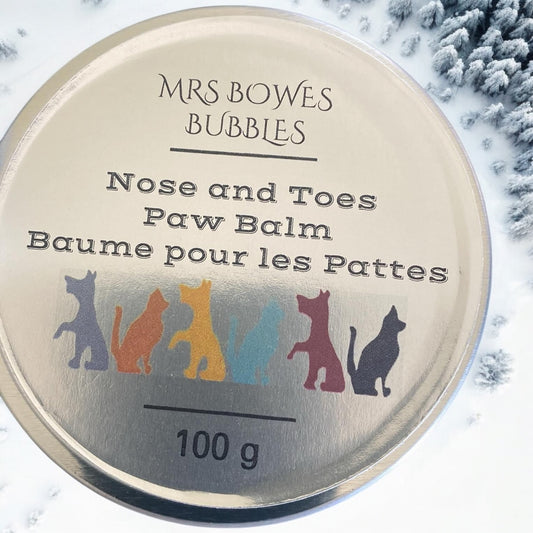Collection: Pet Grooming
Winter can be tough on pets, especially with the cold, snow, ice, and salt that can affect their paws and coat. Here are some essential winter grooming tips for paw care and coat care to help keep your pet safe and comfortable during the colder months:
Winter Paw Care
Paw pads can become dry, cracked, or irritated during winter due to snow, ice, and chemicals like salt used to melt ice. Here's how to protect them:
1. Keep Paws Clean
- After walks, wipe your pet’s paws with a damp cloth or use pet-safe wipes to remove any salt, ice, or chemicals that might be stuck to their pads. These substances can cause irritation and burns if left on the skin.
2. Trim Excess Fur Between Toes
- Snow can easily get trapped in the fur between your pet's toes, forming ice balls that can cause discomfort. Regularly trim this fur to prevent ice buildup and reduce the risk of slipping.
3. Moisturize Paws
- Just like skin, paw pads can get dry and cracked in the winter. Use a pet-safe paw balm or moisturizer to keep their paws hydrated. These balms form a protective layer on their paws, preventing cracking and reducing dryness.
4. Booties or Paw Protection
- Consider using pet booties to protect your pet's paws from harsh winter elements like snow, ice, or salt. If your pet refuses to wear boots, applying a paw wax can provide some protection against the cold and chemicals.
5. Nail Care
- Winter often means less outdoor play, which may result in slower nail wear. Check your pet's nails regularly, and trim them if necessary to prevent them from becoming too long, which could cause discomfort or injury when walking on icy surfaces.
Winter Coat Care
During the winter, a pet's coat needs extra care to stay warm, healthy, and dry.
1. Regular Brushing
- For Long-haired Pets: Matting and tangling are more likely during winter when pets wear thicker coats. Regular brushing helps remove loose hair, prevents matting, and distributes natural oils to keep the fur shiny and healthy.
- For Short-haired Pets: Even short-haired pets need brushing in winter to remove loose fur and prevent buildup, which can lead to discomfort and skin irritation.
2. Bathing Frequency
- Winter weather can dry out your pet’s skin. Bathe your pet less frequently than in warmer months to avoid stripping away their natural oils, which protect and moisturize the skin. Use a gentle, moisturizing pet shampoo if a bath is necessary.
3. Keep Your Pet Dry
- After walks in the snow or rain, dry your pet’s coat thoroughly. Wet fur can chill your pet and lead to discomfort or even hypothermia. Pay extra attention to drying their underbelly, paws, and fur between the toes.
4. Layering with Winter Apparel
- If your pet has a short coat or is particularly sensitive to the cold, consider dressing them in a pet sweater or coat. Make sure the clothing is designed for pets, allowing them to move freely and ensuring they’re comfortable.
5. Maintain Healthy Skin
- Dry, flaky skin can be a concern during winter. Use a humidifier in your home to prevent the air from becoming too dry, which can affect your pet’s skin and coat. Additionally, consider adding omega-3 fatty acids to their diet, which can help improve coat condition and skin health.
6. Watch for Ice Balls in the Coat
-
Nose and Toes Paw Balm
Regular price $18.95 CADRegular priceUnit price / per$0.00 CADSale price $18.95 CAD

